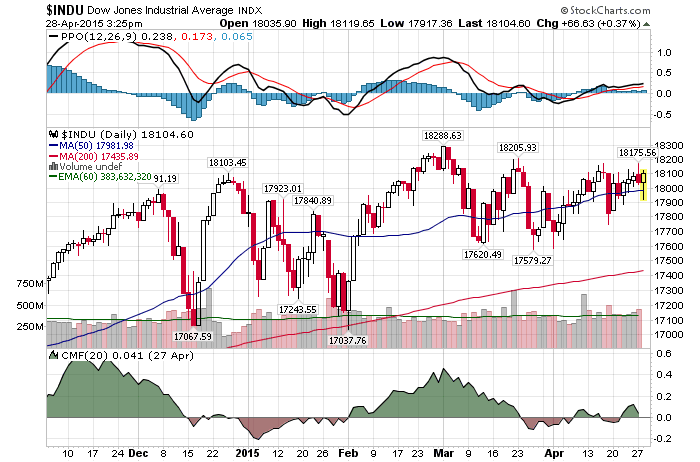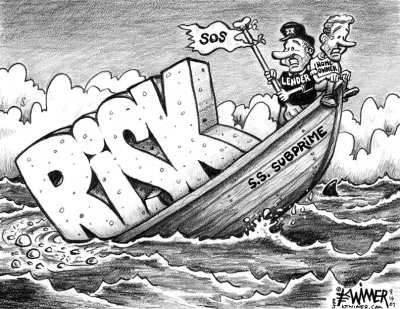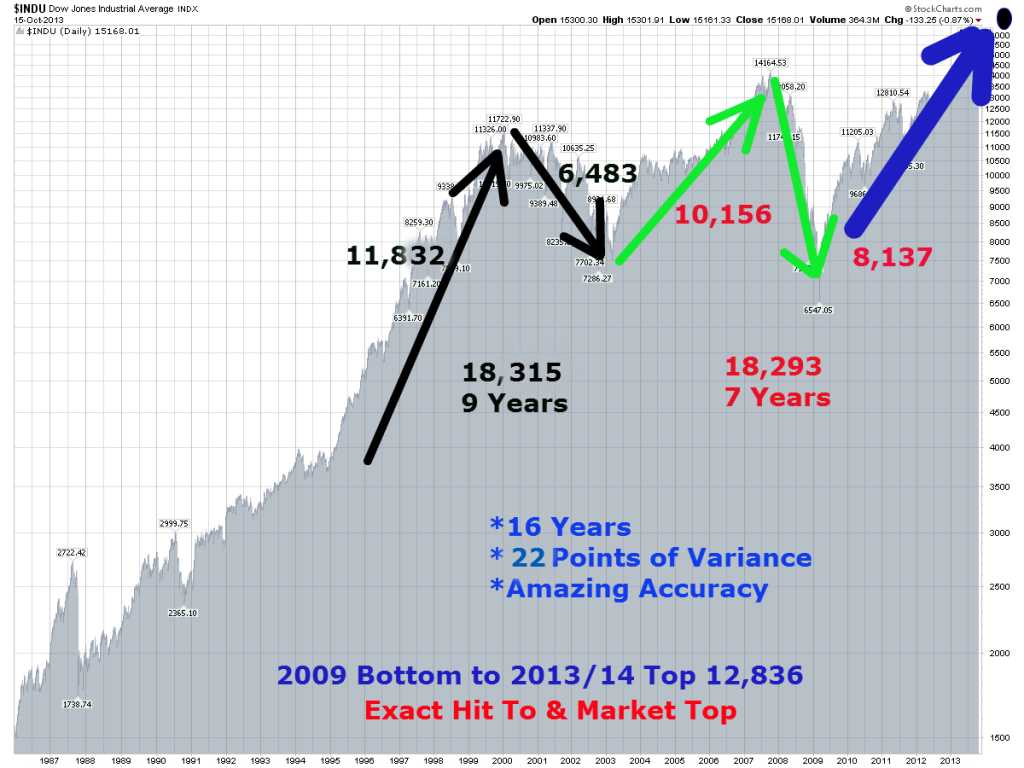Yesterday, the market soared on the FOMC Minutes indicating slower tightening (if any at all) over the next few years. Just as we have been saying for a long time. Today, Narayana Kocherlakota, president of the Minneapolis Federal Reserve Bank suggested that the central bank might push its main interest rate even lower or cut the rate it pays banks on excess reserves kept at the U.S. central bank to accelerate economic recovery.
Say what?
How can you cut something that is already technically ZERO. Since the rates are at zero and the yield curve is flattening as we speak, what are they going to do when the next recession hits? QE 100 Billion, 500 Billion, $1Trillion/month or will they just send everyone a check for $1 Million. And that’s the biggest problem here. The FEDs have already used up their BAZOOKA and there is nothing they can do to prevent, stop or reverse the next recession. As per out mathematical work the next recession/bear market will transpire between 2014-2017. Checkmate.

Did you enjoy this article? If so, please share our blog with your friends as we try to get traction. Gratitude!!!

Click here to subscribe to my mailing list
Today’s Market Action Is A Perfect Example Of Why You Should Never Follow The FED Google
Reuters: Fed could cut rates to combat joblessness: Kocherlakota
ROCHESTER, Minnesota (Reuters) – The Federal Reserve should do more to boost both inflation and jobs, a top Fed official said on Tuesday, including possibly pushing its main interest rate even lower or cutting the rate it pays banks on excess reserves kept at the U.S. central bank.
“The key is for us to be able to demonstrate in an effective fashion that we are committed to the recovery,” Narayana Kocherlakota, president of the Minneapolis Federal Reserve Bank, told reporters after a speech.
The Fed has been winding down its massive bond-buying stimulus since early this year, and Kocherlakota said he has no plans to “relitigate” that decision, which puts the Fed on track to ending bond-buying altogether before the end of the year.
Instead, he said on Tuesday, the Fed must do better on returning the economy more rapidly to full employment and a healthy 2-percent pace of inflation.
The Fed has kept its short-term policy rate between zero and a quarter of a percentage point since December 2008, and Kocherlakota told the Greater Rochester Chamber of Commerce that “we should be thinking about” pushing it even lower.
“It’s really about demonstrating a commitment to stay with the recovery for as long as it takes to get the economy fully recovered,” he said.
The idea of lowering the Fed’s main policy rate, already near zero, or cutting the rate the Fed pays to banks on reserves they keep locked up at the central bank, is outside the mainstream of current Fed policymaking, which currently is focused on providing guidance about what economic conditions could lead to the Fed raising rates.
Kocherlakota, whose lone dissent against the Fed’s policy decision last month marks him as the central bank’s most dovish member, said that guidance falls short.
“We would be better off having more of a collective vision as a committee to what the change in conditions would have to be that would lead us from ending the asset purchase program to raising rates,” he told reporters.
“Unless we communicate as a group about what those conditions are, then we face this instability that two words in a press conference, or two words in a speech or an answer to a Senator can end up moving financial markets participants’ vision of what we are trying to do with policy.”
The Fed last month said it would reduce its monthly bond purchases to $55 billion and would continue to trim the program in measured steps as long as the economy improves as it expects.
After the policy-setting meeting, Fed Chair Janet Yellen briefly roiled markets when she suggested the Fed may start raising rates around “six months” after the bond-buying program ends. She also said that the timing of any rate hike depends on economic conditions, but that message was lost in the immediate aftermath of her answer.
“Unless we communicate more effectively on a collective basis about how conditions are shaping our policy choices, I think we going to continue to face that kind of instability,” Kocherlakota said.
In recent weeks several Fed policymakers have given their views as to when rates ought to start rising, although forecasts from all 16 current policymakers show nearly all expect it sometime next year.
Kocherlakota on Tuesday refused to be drawn about his personal expectations for when rates should rise.
He reiterated his expectation that the U.S. economy will likely grow around 3 percent this year and that unemployment will fall to the “low sixes” by the end of this year, from 6.7 percent now.
“It’s a question of the speed of the recovery, not about whether we are seeing a recovery,” he said.
Inflation, which is running near 1 percent, is “too low” and does not look likely to rise back to the Fed’s 2 percent goal for another four years, Kocherlakota said.
“Low inflation in the United States tells us that resources are being wasted,” he said, including the productive potential of Americans who cannot get jobs because demand for goods and services is so low.
And while unemployment has fallen from the recession-era high of 10 percent, “the U.S. labor market is far from healthy,” he said. Longer term, he said, unemployment should fall to just over 5 percent.
Kocherlakota’s view that the Fed should do more is no secret: The Fed, in his view, should have promised to keep rates near zero until U.S. unemployment falls below 5.5 percent, as long as inflation and financial stability risks are contained.
Instead, the Fed last month dropped the idea of tying low rates to any specific unemployment figure and said it would factor in a wide range of economic measures as it judged the correct timing for raising rates.
Kocherlakota said that the Fed could reword its policy statement show “a stronger commitment to the recovery in terms of being willing to stay accommodative for as long as it takes to see the recovery to completion.”












